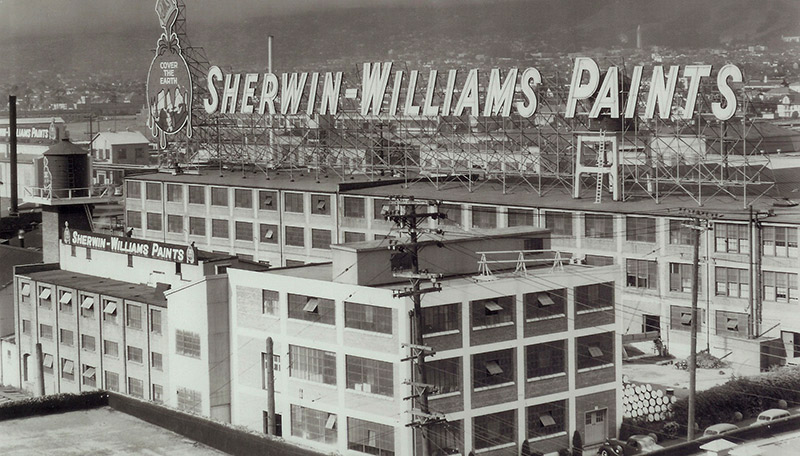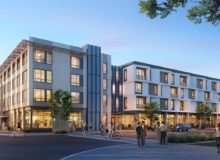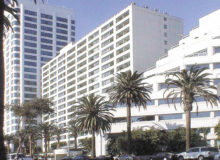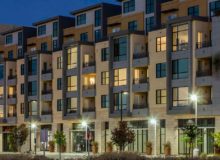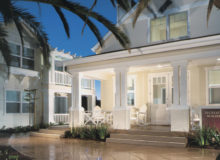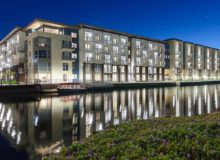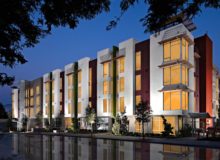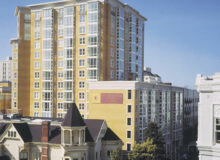Publication: San Francisco Business Times
Date: January 31, 2014
Decades after the city reinvented itself as an office and R&D hub, it’s shifting focus toward more retail and homes
A former Sherwin Williams factory site in Emeryville — a rare a 8.5-acre property — has been vacant for more than decade.
After extensive environmental cleanup, the site is ready to go from brownfield to built-from-scratch neighborhood with homes, office, retail and expansive parks at time when the ever-transforming Emeryville is on the verge of a housing and development boom.
With more than 1,200 residential units in the pipeline, the compact East Bay city of Emeryville could see its population grow by about 20 percent to more than 12,000 people within the next five years.
In addition to housing, developers are plotting commercial projects such as improvements to the Emeryville Public Market and a new hotel as an extension to Bay Street, a retail and housing mixed-use development.
“Emeryville has done a tremendous job of reinventing itself from what it was,” said Jeff White, senior development director for AvalonBay, of the city’s past as an industrial center. “It has transformed itself quite successfully over the past 25 years, and this is a continuation of that trend. The post-recession encouraged developers like our company to look upon Emeryville favorably as rents in San Francisco continue to escalate.”
Infrastructure already there
An influx of housing would mean significant growth for Emeryville, which has a little more than 10,000 residents and about 6,650 housing units, according to the 2010 U.S. Census.
“Emeryville has the infrastructure to support (the growth),” said Frank Flores, development manager at Signature Development Group and former Emeryville Planning Commissioner. The city could enhance its popular Emery Go Round shuttle that takes riders to BART and the schools, he said, but overall the quality of life is improving.
Developers are picking up on that. AvalonBay is working on entitling a 260-unit apartment building at 6701 Shellmound St. on the site of the headquarters and warehouse of Nady Systems, a maker of audio equipment and headphones. That project could break ground in 2015.
Projects already under construction include 193 units at the corner of 64th Street and Christie Avenue from Essex Property Trust, which will start leasing in September, and Equity Residential’s $70 million Parkside, a 176-unit project at the corner of Powell and Hollis streets. Both wrap up construction this year.
Other apartment projects in the pipeline include Holliday Development’s 100 units at 3800 San Pablo Ave. that is approved, EAH Housing’s proposal for 86 affordable units at 3706 San Pablo Ave. and 460 units as part of the Sherwin Williams site project being developed by SRM Ernst Development Partners and Thompson Dorfman.
“It’s a large site right in an urban center. There’s a real opportunity to create a place as opposed to just building a one-off multifamily project,” said Joe Ernst, principal of SRM Ernst. “It’s part of the Park Avenue district, which has a neat, eclectic and wide mix of community members from artists to craftspeople, from blue collar to white collar.”
Besides housing, SRM Ernst Development Partners and Thompson Dorfman envision building 70,000 square feet of office, 15,000 square feet of retail, 3.26 acres of public parks and 1.5 acres of public open space. The project is going through the city’s approval process, and Ernst said construction on the first phase of the project could start in 2015. The site contains one remaining building from its factory days that the developers plan to renovate into creative office space, which has been in high demand in Emeryville. The housing will include a mix of unit sizes and types. One major highlight, Ernst said, is that just under half of the land will be used for parks and open space.
“Emeryville is a strong market; it’s a great place to live,” Ernst said. “The community has gone to great lengths to improve schools. It has close proximity to San Francisco and has a good retail base to generate revenue for the city.”
Boom without redevelopment
Over the past few decades, Emeryville morphed from industrial wasteland to job and retail center thanks to city redevelopment agencies, which under a former state program allowed Emeryville to reap and borrow against increases in tax revenue from improving blighted properties.
Redevelopment served as a catalyst for projects like Wareham Development’s various office and bioscience buildings and Bay Street, a shopping center with residential over retail. The state did away with redevelopment in 2011, leaving cities like Emeryville without a once-powerful tool.
“With the new projects in Emeryville, you’re really catching the residential market right now in an extremely strong growth spurt,” said Helen Bean, the city’s economic development director. “Without redevelopment, you’re completely reliant on what the market will support in that development cycle.”
A proposal to build a Macy’s as part of an extension of Bay Street died with redevelopment because the developer, Madison Marquette, couldn’t pay for a parking garage. High-density retail centers call for structured parking, Bean said, so those types of projects no longer pencil.
At the Public Market, a mixed-use development that includes retail, restaurants, office, hotel and a movie theater on about 14 acres, change is afoot as well. City Center Realty Partners bought the property in fall of 2012 from TMG Partners, which had entitled it for 800,000 square feet of new space to transform the site into an urban village.
The developers have been looking at how they want to build out the center and have so far concentrated on bringing in a grocery store and revamping the restaurants, retail and international food court that houses various vendors and food stalls.
“Emeryville has all the critical ingredients to attract talented workers who don’t want to be in the suburbs,” said Mark Stefan, co-founder of City Center Realty. “Young people want to live in an environment that is urban in nature. In Emeryville, you’ve got accessibility and variety in terms of entertainment, food and the arts.”
Peter Solar, who is overseeing the development of Parkside for Equity Residential, echoed those sentiments. East Bay cities like Emeryville and Berkeley, where his firm is also constructing another building, are turning into attractive alternatives for people who want an urban experience.
“The neat little restaurants, boutique delis and bars — you can get that in Berkeley and in Emeryville,” Solar said. “Our target population for renters, they eat that up, and you get affordability as opposed to being in San Francisco. Right now we’re seeing a lot of demand.”

